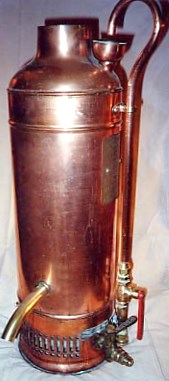 Here is a water heater that was made in 1895. That makes it about 123 years old. Certainly, we have much more efficient equipment now, right? Well, only perhaps. This is a condensing heater. It’s also a “contact” heater. That means flames/hot flue gasses mingle directly with the water being heated. Similar heaters when actually measured, showed an efficiency of 92%. Your standard modern gas heater is more like 60%. Another interesting thing about this heater is that it has only three moving parts. There just isn’t much to fail, and if it does, it’s easy to fix. Also, as you can see, it’s copper. As long as water is not acidic or aggressive in some other way, this heater won’t fail from corrosion. It’s a demand heater with no electrical use and no standing pilot, so has no standby energy losses either. All those ideas from one heater, called the Ewart’s Royal Geyser! I collect old heaters and have over 70 of them. Each one presents ideas. Some are good, like this one I’ve been discussing, and some demonstrate ideas that are surprisingly unsafe or uninformed. 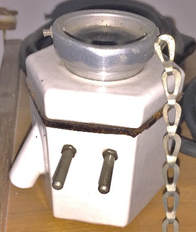 Here’s an example of a scary heater. It’s electric, but as you can see with only two prongs, there is no ground. It’s designed to strap to the spout on the kitchen faucet. You turn on the tap, then plug it in and you get a little stream of hot water from it. That was much better/faster than heating water on the stove. A plus to this sort of heater is there are no heat losses in the plumbing. It’s a point-of-use heater and very efficient. The problems however are in managing it correctly… first water flow, then power, or it melts down! But the main problem is the lack of a ground. If you put one hand in the water and your other hand on a metal sink, guess what… you become the ground path. That’s why you don’t see these anymore, because they seemed to like electrocuting children! 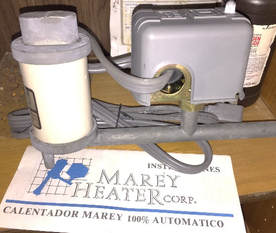 But, have a look at this heater: It’s got the same heating element, which is Nichrome wire, exposed directly to the water, but it also has two other things, a ground and a flow switch. This way, it can remain plugged in and can’t use a person as a ground path. It’s actually a heater used for showering. The showerhead mounts directly to the unit, so you get to shower with this device. How exciting can a shower be?! With this, you still have no line or standby losses. Not bad for an old idea. 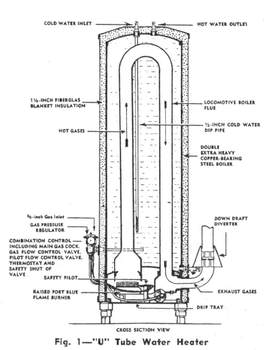 Old heaters offer up a treasure trove of ideas to consider. Here’s a diagram of one such interesting design: See how the flue inside of it heads up to the top and then turns 180* and heads back down to near the bottom before it exits out the side? Then you’ll see the draft hood down towards the base of the tank. The benefit of this is it greatly reduces the standby loss from the tank as the flue is no longer acting like a chimney and sucking air through the heater, stealing heat all the time. This essentially is a heat trap for the flue, so it only flows when the main burner comes on. It saves lots of energy and has no moving parts. Also it doubles the heat transfer area of the flue for more efficient utilization of heat in the flue gasses. 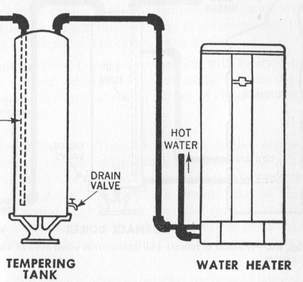 When electric water heaters were first made, they didn’t seem to perform all that well as the electric supply to homes was small by today’s standards and the heating element might be only 600 or 1000 watts. Today the common element size is 4500 watts. The manufacturers got around this with the idea of a tempering tank: The basic idea was to place the uninsulated tank in a warm place, like boiler room, sunny place or wherever there was “waste” heat available. By doing this, it certainly made the slow electric heater more capable of meeting the demand, and probably reduced complaints to the manufacturer. I see no reason why we can’t do the same thing now and put some waste heat to use. Using old ideas, it would not be difficult to build a heater that is far more efficient than most modern heaters, one that will last a VERY long time, (think the life of the house it’s installed in) and likely cost little more than a conventional heater to buy. Also, if we keep it very simple, the likelihood of it needing much upkeep is significantly reduced. Think of the savings this imaginary heater will give over its long life. Lastly, if we got used to thinking of life-cycle-cost instead of first cost, we’d be willing to spend a bit more for this heater that should never need replacing. Anyway, food for thought! Yours, Larry
0 Comments
|
Larry Weingarten
Looking back over my working life of 50+ years, it seems clear that self sufficiency has always been the best way for me to be useful. Now, mix in a strong interest in water in its many forms and the wide world of animals and you'll know what's important to me. Archives
January 2023
Categories |
Copyright © 2014 - 2023
All Rights Reserved
All Rights Reserved
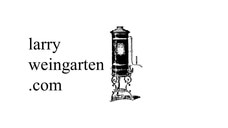


 RSS Feed
RSS Feed